 Next: The nonsmooth pitchfork
bifurcation
Next: The nonsmooth pitchfork
bifurcation
 Next: The nonsmooth pitchfork
bifurcation
Next: The nonsmooth pitchfork
bifurcation
 , K)-plane
, K)-plane
Here, we restrict to the section  = 0. The bifurcation structure in this section is shown
in Figure 6.
= 0. The bifurcation structure in this section is shown
in Figure 6.
The multistable regions only exist for large K. Figure 7 shows the bifurcations that happen as K decreases.
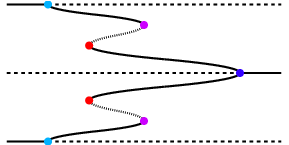
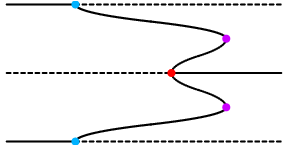
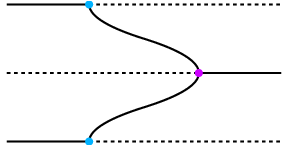
Figure 7:
Sketches of the bifurcations along the line  in the second overlapping region as K
decreases from 0.8 to 0. The bifurcation structure of Figure 3 (right) for K = 0.8
transforms into one like Figure 3
(left) by ``absorbing'' pairs of saddle-node bifurcations in the
second pitchfork bifurcation.
in the second overlapping region as K
decreases from 0.8 to 0. The bifurcation structure of Figure 3 (right) for K = 0.8
transforms into one like Figure 3
(left) by ``absorbing'' pairs of saddle-node bifurcations in the
second pitchfork bifurcation.
If K is large enough, the saddle-node and pitchfork bifurcations can become nonsmooth.
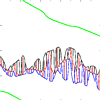 |
The nonsmooth pitchfork bifurcation |
|
| |
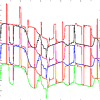 |
The nonsmooth saddle-node bifurcation |
|
| |
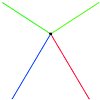 |
A nonsmooth bifurcation point of codimension two |
 Next: The nonsmooth pitchfork
bifurcation
Next: The nonsmooth pitchfork
bifurcation
Created by Hinke Osinga
Last modified: Wed May 17 16:10:59 2000